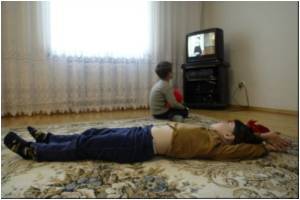
"By measuring brain anatomy and applying an algorithm, we can now accurately predict how the visual world for an individual should be arranged on the surface of the brain," said senior author Geoffrey Aguirre, MD, PhD, assistant professor of Neurology. "We are already using this advance to study how vision loss changes the organization of the brain."
The researchers combined traditional fMRI measures of brain activity from 25 people with normal vision. They then identified a precise statistical relationship between the structure of the folds of the brain and the representation of the visual world.
"At first, it seems like the visual area of the brain has a different shape and size in every person," said co-lead author Noah Benson, PhD, post-doctoral researcher in Psychology and Neurology. "Building upon prior studies of regularities in brain anatomy, we found that these individual differences go away when examined with our mathematical template."
A World War I neurologist, Gordon Holmes, is generally credited with creating the first schematic of this relationship. "He produced a remarkably accurate map in 1918 with only the crudest of techniques," said co-lead author Omar Butt, MD/PhD candidate in the Perelman School of Medicine at Penn. "We have now locked down the details, but it's taken 100 years and a lot of technology to get it right."
The research was funded by grants from Pennsylvania State CURE fund and the National Institutes of Health (P30 EY001583, P30 NS045839-08, R01 EY020516-01A1).
Advertisement














